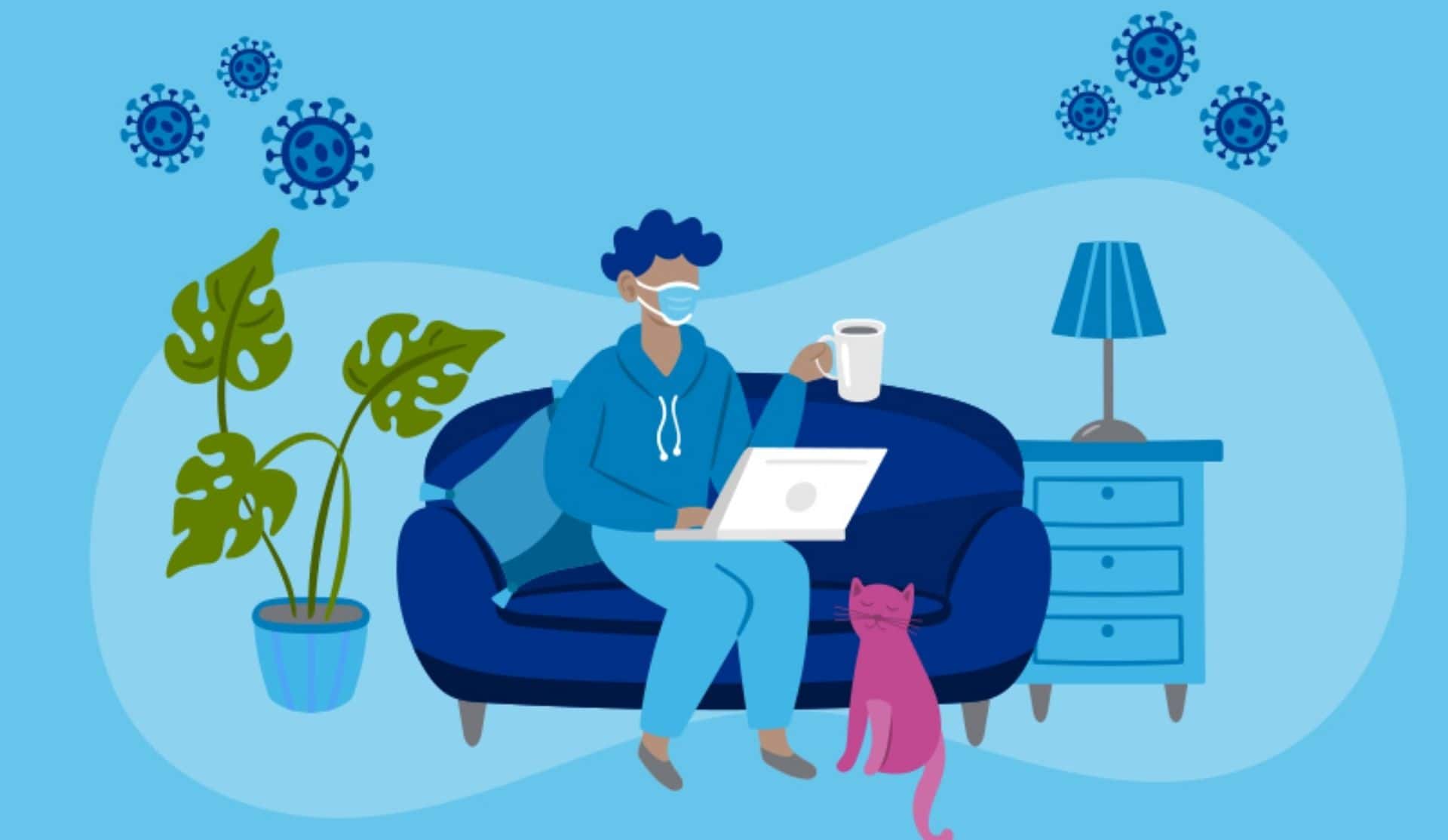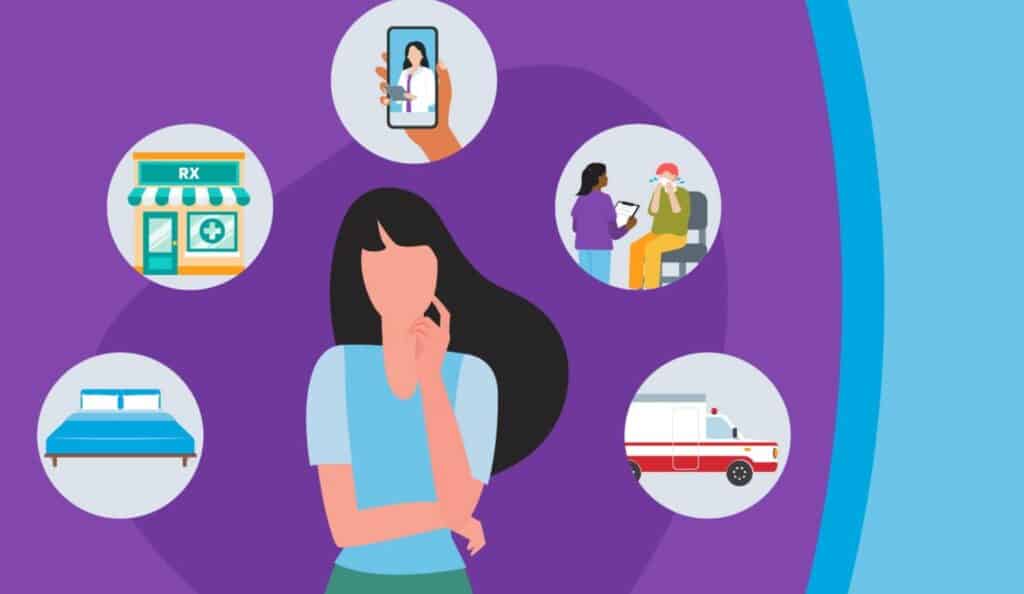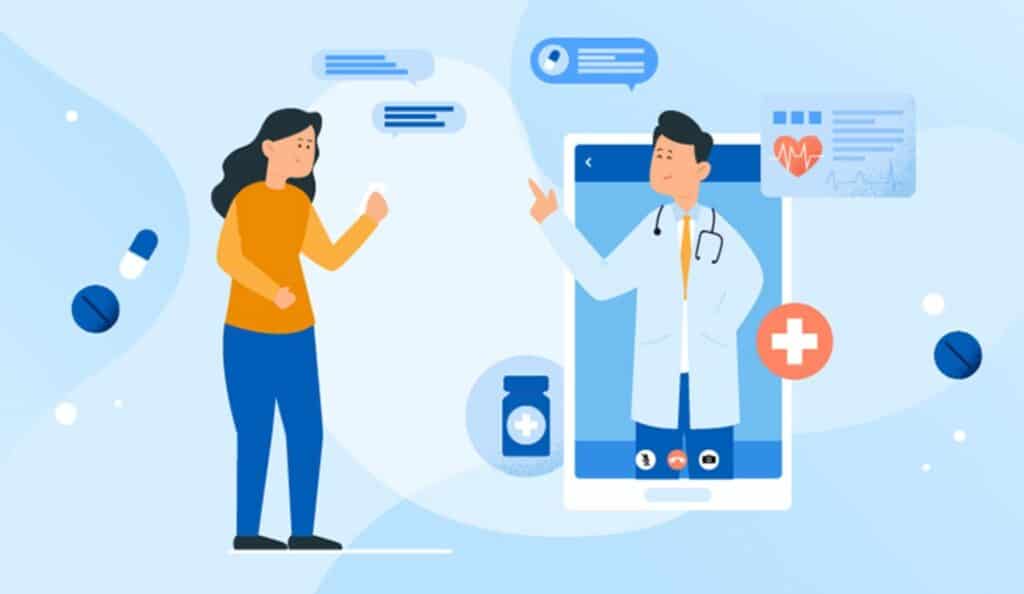
How to Offer Online Care for Patients in Isolation
Online care and telemedicine continue to develop, isolated patients can receive comprehensive medical treatment from afar, eliminating the need for in-person contact with medical staff. This is useful for contagious disease sufferers, post-surgery recuperation, or quarantine observance. Those who cannot go to the office need online care.
Virtual consultations, remote health checks, online psychiatry, and medicine must be at the heart of physical as well as mental well-being in quarantine. Using telemedicine services, health workers can provide continuous support, and patients at home can easily access help.
Understanding Online Counselling and Telehealth

Being alone and lonely can be bad for your health, particularly among older adults in the United States. Approximately 25% of adults aged 65 or older report feeling socially isolated, usually because they reside alone or have experienced the loss of people they loved. In this way, it may contribute to dementia and other medical problems.
However, to assist with this, telehealth technology allows physicians to remain connected with remote patients through phone calls, video calls, emails, text messages, and chatbots. Remote patient monitoring (RPM) equipment can automatically monitor key health indicators with wearables or manually via online reports and consultations with physicians. This ensures that patients receive the care they require even from a faraway distance.
It is also essential to incorporate follow-up care in telehealth initiatives since patients who fail to adhere to emergency directions may experience severe health issues and increased hospital readmission. This may raise costs and strain medical facilities, thus rendering continuous virtual observation and timely assistance crucial for improved health outcomes.
Affects of Social Isolation

Social isolation is warned to be as detrimental to health as smoking, obesity, and physical inactivity by the WHO, leading to lower life expectancy and mental health problems.
Among older adults, it may lead to anxiety, depression, cognitive impairment, and Alzheimer’s disease, especially where mobility difficulties, hearing loss, absence of transport, and bereavement make it more difficult for them to remain connected.
But there are also active measures that can be taken by the elderly to minimize the ill impacts of isolation, enhance their psychological health, and ensure a better quality of life.
What is Virtual Care?
Virtual care means applying electronic devices such as computers, tablets, and monitors to link health professionals with patients remotely, enabling consultations, diagnosis, treatment, monitoring of symptoms, and prescribing medication; this method enhances communication and ensures improved management of healthcare through various services, including-
Telehealth
This facilitates virtual visits through video calls, telephone, and online messaging to conduct screenings, diagnose, and provide preventive care.
Remote Monitoring
This involves applying wearables and sensors to monitor patient health in real time and identify problems before they develop into serious issues.
Patient Portals
This enables patients to access medical records, and test results, and make appointment bookings while enhancing engagement.
Virtual Rounding
Virtual rounding is where clinicians remotely check in with patients via video conferencing to deliver primary care.
Virtual Nursing
This enables nurses to evaluate, monitor, educate, and communicate care plans through telemedicine platforms, assisting in minimizing exposure to infectious diseases and improving patient and provider safety, particularly during public health emergencies such as pandemics.
How Online Care and Telehealth Help Patients in Isolation

Social Isolation during Covid-19
COVID-19 restrictions have kept individuals indoors more to prevent the spread of the virus, particularly for elderly and vulnerable people. Additional precautions must be taken to prevent contracting the deadly virus. Isolation can lead to loneliness, sadness, stomach pain, and headaches, and elderly individuals are more susceptible to loneliness due to this.
How Online Care and Telehealth Combat with this
Telehealth is an effective method to address loneliness. Telehealth provides patients with support in staying healthy amid difficult times. Telehealth may also involve the caregivers or the family members in the care of the patient, which can contribute to lessening loneliness. Telehealth can continue to engage high-risk groups through doctors as the pandemic persists and prevent their conditions from deteriorating, which will combat the effects of social isolation.
The COVID-19 pandemic has revolutionized how telehealth operates, enabling elderly patients to engage in social activities to combat depression and loneliness. In a study conducted in May 2020, telehealth groups were utilized to assist lonely older adults. Participants attended organized Zoom calls, writing sessions, arts and crafts, and exercise classes. Guest speakers were introduced through video to substitute activities lost due to social distancing. Home projects were also developed and exhibited. These intended social activities delighted patients.
Helping Patients in Isolation with Access to Healthcare Professionals
Teleconsultation enables individuals who have financial difficulties, mobility problems, or age-related difficulties to receive healthcare from home. Even though healthcare systems in the US face rising costs and inconsistent quality, despite dedicated clinicians, teleconsultations on the other are cost-effective and convenient, particularly for patients in outlying areas.
It also assists those patients who have no idea where to seek care and enhances their awareness of healthcare avenues.
Teletherapy provides continuous mental healthcare through the ability to hold therapy sessions online, which assists in alleviating loneliness during hard times. Telemedicine enables more patients to be seen with ease by health workers, assists in shortages of doctors, and offers flexible hours with no expense of physical offices.
Keeping In Touch with Their Family
Telemedicine also assists in keeping patients in touch with loved ones and friends, so that they remain in contact even while being in the hospital or changing locations between places of care.
Televisitation is when patients are able to converse with family members online if they cannot meet in person. Having a daily routine of making virtual calls may reduce feelings of loneliness and provide valuable emotional support.
Online Care for Old Peoples
Several online sites provide group therapy and peer support groups, which are easier for some older adults than individual counseling since they serve to help reinforce a sense of belonging and remind participants that they are not alone.
In contrast, some older adult support groups are free, it’s best to contact local senior centers, newspapers, or religious communities for available programs, or look online for peer support groups in the immediate area; the COVID-19 pandemic brought into sharp focus how social isolation harms mental, emotional, and physical health, and since many older adults already were lonely, the lockdowns exacerbated the problem, with 1 in 3 older adults being lonely as reported by the WHO. Still, there are effective solutions to diminish isolation and rebuild community ties, such as participating in online group therapy and community-based support programs for guidance and support.
Steps to Improve Virtual Care in Simple Terms
Train Your Care Team
Your team is important for virtual care. They need to learn about the latest tools to help patients better. Teach them to set up online meetings, use secure connections, keep patient records, and follow privacy rules. Let them practice before starting virtual care.
Teach Patients About Telehealth
Some patients may not know much about virtual care. Show them how it works, what they need, and how to fix basic tech problems. Make sure they know about privacy and security. Help them check if their insurance covers telehealth.
Use the Right Technology
Set up computers, tablets, and medical devices properly. Install software for appointments, health records, and billing. Use secure methods to protect patient information. Choose cloud services that can grow and change with your needs.
Encourage Patients to Use Devices
Patients should use tablets, computers, and monitors to manage their health. Virtual care tools like telehealth carts and online portals help them stay involved in their treatment.
Plan for Technical Issues Tech
Problems can disrupt virtual care, so have a backup plan. Use secure networks, backup servers, and cloud storage, and keep software updated to ensure everything runs well. Have IT experts ready to solve problems quickly.
Improve Your Virtual Care System
Regularly check your virtual care methods to find ways to improve. Updating your processes helps you give better and more efficient healthcare to patients.
Explain the Benefits of Virtual Care
Make sure both patients and staff know the benefits, such as:
- Better access to healthcare
- Lower medical costs
- Less paperwork and easier processes
- Less chance of getting sick, especially during pandemics.
Benefits of Online Care and Virtual Care

Telehealth enables physicians to provide care beyond normal office hours. It assists in regions where doctors are scarce. It facilitates better management of long-term illnesses such as diabetes and heart disease. The service also empowers patients to seek assistance earlier, which can prevent emergency visits and hospitalization, as well as enhance communication and faith in physicians.
Though telehealth does not solve all healthcare problems, it is an integral component of contemporary medicine. Organizations such as the American Medical Association (AMA) facilitate physicians in using telehealth to its full potential through the provision of tools and resources, enhancing digital competence, and connecting with underserved populations. Initiatives such as AMA STEPS Forward Innovation Academy and the Telehealth Implementation Playbook educate physicians to optimize telehealth services.
Conclusion
Telemedicine and online care have changed healthcare by connecting patients with doctors, especially for those who are alone. They help with illnesses and mental health, and support lonely elderly people, making care easy to get and affordable.
With online check-ups, remote monitoring, and therapy over the internet, patients can get medical help without needing to visit a hospital. As technology improves, telemedicine will stay important in healthcare, helping patients get better, easing pressure on hospitals, and making people healthier. By using virtual care, healthcare systems can offer better and kinder services to everyone.